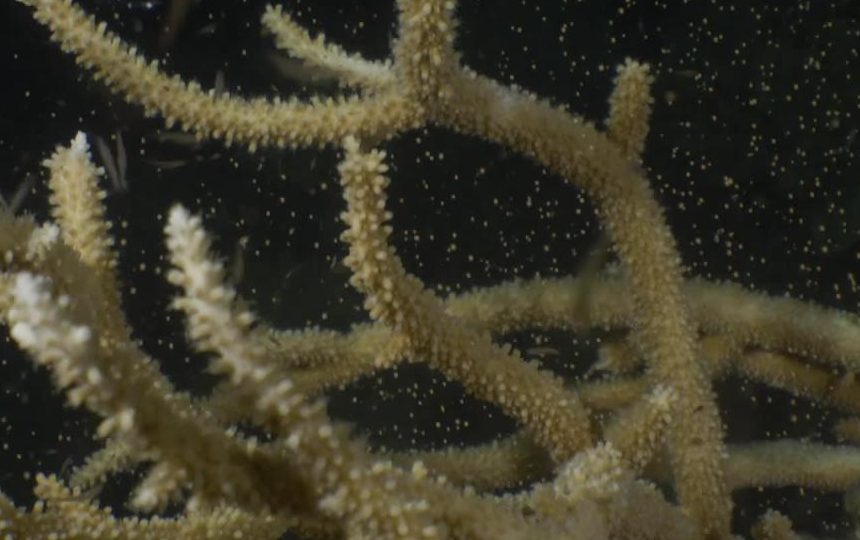The Coralarium is a semi-submerged installation that acts both as a work of art and as a sheltered space to offer sanctuary to marine life
British sculptor Jason deCaires Taylor, famous for creating the Molinere Underwater Sculpture Park, the world’s first underwater sculpture park off the west coast of Granada, has created another piece of eco art: the Coralarium, the first coral regeneration installation.
Part of the AccorHotels’ Fairmont Maldives Sirru Fen Fushi, the installation is situated around the private atoll.
The semi-submerged tidal gallery displays a series of sculptural artworks that pay homage to the rich but fragile sea life and coral house reef surrounding the resort.
“Over the years I have realised that the really humbling thing about what we do is that once we submerge the sculptures they’re not ours anymore. As soon as we sink them, they belong to the sea and nature takes over,” says Jason deCaires Taylor.
“The Coralarium is a place of preservation, conservation and education. Together with the resort we hope to raise awareness for the protection of Maldivian coral reefs. I want to see a better future for the ocean, for people to see it as a delicate place, worthy of our protection.”

Sustainable tourism and working with local communities and ecosystems is an important part of AccorHotels and the Fairmont’s business model.
“Taylor’s art focuses on the natural beauty of the location, creating an extraordinary linkage between our resort and the destination to encourage sustainable tourism,” said Patrick Basset, Chief Operating officer AccorHotels Upper Southeast & Northeast Asia and the Maldives. “This artwork provides a portal for our guests to engage with the area’s fabled natural wonders while enjoying the renowned Fairmont hospitality.”
The semi-submerged Coralarium, placed in line with the horizon, gives guests and visitors a breathtaking view of the ocean and installation.
Leading from the 200-meter infinity pool at the heart of the island, Taylor has created the artwork as an extension of the resort, with an underwater pathway that allows guests to participate in the propagation of corals.
A short swim from the shore leads visitors down to an underwater world with human-shaped figures and vibrant marine life. The materials, textures and configuration have been selected to encourage the settlement of biomass, so the work replicates the reef, giving nature a chance to thrive.
The artificial reefs are created with non-toxic, pH-neutral marine-grade compounds free from harmful pollutants, which will eventually become an integral part of the local ecosystem.
The structure of the Coralarium acts as a sheltered space that offers a permanent sanctuary for ocean life such as fish, crustaceans, octopodes and marine invertebrates. Focusing on coral and biomass restoration, the installation strives to be the most high-end coral regeneration project in the Maldives.

The Coralarium holds three dimensions of artwork: rooftop sculptures placed at the top of the cube structure; the underwater art pieces and sculptures placed on plinths at various heights to highlight tidal movements; and the semi-submerged cube, which creates a bridge between the underwater and overwater worlds.
Ten hybrid organic formations and a series of terrestrial shapes such as fruit, shells and leaf formations will be exhibited in the underwater gallery. The abstract human-like figures are entwined in ‘ivy’ and stand on the molded roots of Banyan trees, covered in sculpted sponges, mushroom corals and staghorn coral formations.
The various forms of ocean life complete the statues, transforming them from inert structures to textured, growing and living organisms, celebrating the marine diversity of the Maldives while creating a breathtaking experience for visitors to snorkel through the Coralarium.
The resort also organises small groups, guided tours by the resident marine biologists several times a day and in the evening, an integrated light system illuminates the museum and attracts marine life.
For more information click here.
10 Most beautiful hotels in the world by the water
If you are looking for a long-haul holiday steeped in luxury with plenty of activities including sailing and water sports…
10 weird and wonderful places to stay in the UK
From lighthouses to submarines, we look at the most unusual places to stay in this summer.
Video: Cinematographer captures The Great Barrier Reef’s annual coral spawning event
Underwater cinematographer Stuart Ireland has filed the rare and mesmerising coral spawning in The Great Barrier Reef. Take a look…






